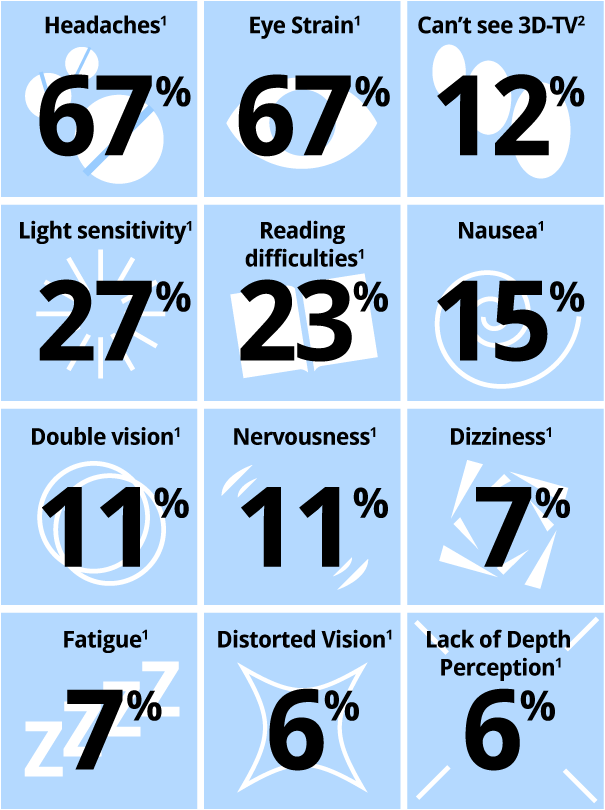Symptoms of aniseikonia can be severe. Depending upon the degree of the aniseikonia, and individual tolerance of the condition, traditionally designed glasses can cause headaches, dizziness, eye strain, fatigue and non-adaptation of the glasses. Aniseikonia can also lead to reading difficulties.

Here’s an example of how dynamic aniseikonia affects you when you’re reading. If this occurs in a child, learning to read could be problematic.

When your glasses make the images different sizes, your brain has to fight to focus on each word – and that’s made more difficult when the eye scans from the end of one sentence back to the start of the next. That’s why it is so important to have a lens that balances the images so they’re the same size. The patent-pending SHAW™ lens alleviates the effects of aniseikonia.
Plus, with our progressive lenses, we optimize the reading zone to a 23-degree angle of downward rotation. The SHAW lens offers a reading zone optimized for comfort specifically for the wearer and the specific frame. In some instances, this can make a dramatic difference in the comfort of wear.
Dr. Shaw has seen much evidence in his practice to indicate that this is often the case, and it makes sense. We know that traditional lens manufacturing does not take into account the way the eyes work together. And by forcing the brain to adapt, we are of course making it work unnecessarily hard to accomplish what should be a simple task – seeing.
Headaches and aniseikonia are the subjects of a research grant that we are developing at Shaw Lens Inc. because we believe this problem is prevalent among glasses wearers. Here’s a snippet of some real SHAW lens patients describing their experience.
There are several behaviour indications that a patient’s glasses may be inducing aniseikonia. Here are some telltale signs.
Headaches and aniseikonia are the subjects of a research grant that we are developing at Shaw Lens Inc. because we believe this problem is prevalent among glasses wearers. Here’s a snippet of some real SHAW lens patients describing their experience.